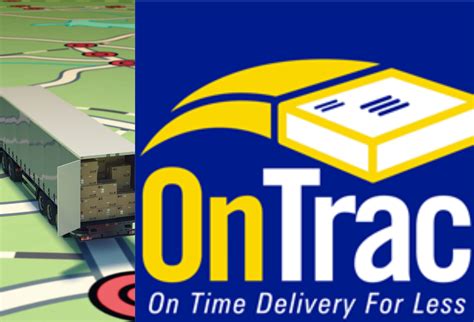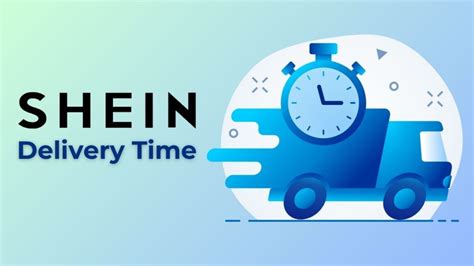Delivery Driver Skills And Responsibilities

The role of a delivery driver is essential in various industries, ranging from food and beverage to e-commerce and logistics. In today's fast-paced world, efficient and reliable delivery services have become a cornerstone of customer satisfaction and business success. As such, delivery drivers are in high demand and play a crucial role in ensuring that goods reach their destinations promptly and securely.
This article aims to delve into the multifaceted world of delivery drivers, exploring the diverse skills and responsibilities that define their profession. From navigating complex routes to managing customer expectations, delivery drivers are integral to the seamless functioning of modern supply chains. Join us as we uncover the intricate details of this dynamic profession, shedding light on the expertise and dedication required to excel in this field.
Essential Skills for Successful Delivery Drivers

The role of a delivery driver demands a unique set of skills that go beyond mere navigation and vehicle handling. While these are undoubtedly critical aspects, a successful delivery driver must possess a well-rounded skill set to excel in their daily responsibilities. Let’s explore some of the key competencies that define the profession.
Route Optimization and Navigation
One of the primary skills of a delivery driver is the ability to optimize routes efficiently. This involves not only understanding geographical areas but also utilizing advanced navigation tools and techniques. Modern delivery drivers leverage GPS technology, mapping software, and real-time traffic data to plan the most efficient routes, ensuring timely deliveries and minimizing fuel costs.
For instance, consider the case of a large e-commerce company with multiple distribution centers across a metropolitan area. Delivery drivers must possess the expertise to plan routes that cover diverse neighborhoods efficiently, considering factors such as traffic patterns, road closures, and customer delivery preferences. This skill is particularly crucial for ensuring prompt deliveries, especially during peak hours or holiday seasons.
Vehicle Maintenance and Handling
The responsibility of maintaining a fleet of vehicles falls on the shoulders of delivery drivers. They must possess a thorough understanding of basic vehicle mechanics, including engine functionality, tire maintenance, and basic troubleshooting techniques. Regularly inspecting vehicles for potential issues and conducting timely repairs or maintenance checks is crucial to ensuring the fleet’s reliability and roadworthiness.
In addition to maintenance, delivery drivers must also demonstrate exceptional handling skills. This involves safely maneuvering vehicles through various road conditions, including heavy traffic, narrow lanes, or adverse weather. The ability to navigate safely and efficiently contributes to the overall reliability of the delivery service, reducing the risk of accidents and delays.
Customer Service and Communication
Delivery drivers are often the face of the company they represent, interacting directly with customers. As such, excellent customer service skills are imperative. This involves maintaining a friendly and professional demeanor, even in challenging situations. Delivery drivers must possess strong communication skills to provide updates, address customer inquiries, and manage expectations effectively.
Furthermore, delivery drivers often play a crucial role in resolving customer issues on the spot. Whether it's handling delivery complications, addressing concerns about damaged goods, or assisting with returns, drivers must demonstrate problem-solving abilities and a customer-centric approach. This aspect of the job requires a blend of empathy, quick thinking, and effective communication to ensure a positive customer experience.
Key Responsibilities of Delivery Drivers

Beyond the essential skills, delivery drivers undertake a wide range of responsibilities that contribute to the seamless operation of the delivery process. These responsibilities encompass various stages, from order fulfillment to post-delivery follow-ups. Let’s delve into some of the key duties that define the role of a delivery driver.
Order Fulfillment and Dispatch
The initial stage of a delivery driver’s responsibilities involves order fulfillment and dispatch. This process begins with carefully reviewing order details, including the items to be delivered, their quantities, and any special instructions or requirements. Drivers must then accurately gather and load the necessary items onto their vehicles, ensuring that each order is complete and ready for dispatch.
During this stage, delivery drivers often collaborate closely with warehouse or dispatch staff to ensure a smooth transition. They may need to prioritize orders based on urgency, customer preferences, or distance, ensuring that the most time-sensitive or high-value deliveries are handled first. This coordination is critical to maintaining efficient operations and meeting customer expectations.
Route Planning and Execution
Once the orders are ready for dispatch, the focus shifts to route planning and execution. Delivery drivers leverage their expertise in navigation and route optimization to plan the most efficient paths for delivering goods. This process involves considering various factors, such as traffic conditions, customer delivery windows, and the nature of the items being delivered.
For example, perishable goods like food or pharmaceuticals require careful planning to ensure timely delivery and maintain product integrity. Delivery drivers must be adept at managing these challenges, employing strategies such as optimizing delivery routes to minimize travel time or ensuring that temperature-controlled vehicles are available for specific orders. This attention to detail is essential for maintaining customer satisfaction and compliance with industry regulations.
Delivery Execution and Customer Interaction
The core responsibility of a delivery driver is, of course, the actual delivery of goods to customers. This involves navigating to the designated locations, whether residential addresses, businesses, or drop-off points, and ensuring a smooth handover process. Delivery drivers must be adept at handling diverse delivery scenarios, from navigating complex apartment complexes to delivering to remote or rural areas.
During the delivery process, drivers often interact directly with customers, providing updates, answering inquiries, and ensuring a positive experience. This interaction is a critical aspect of building customer loyalty and brand reputation. Delivery drivers must possess excellent interpersonal skills, empathy, and the ability to adapt their communication style to suit different customer needs and preferences.
Post-Delivery Follow-ups and Feedback
The responsibilities of a delivery driver extend beyond the actual delivery. Post-delivery follow-ups and feedback collection are crucial for continuous improvement and customer satisfaction. Drivers often conduct brief surveys or gather feedback from customers to assess their overall experience, the quality of the delivered goods, and the timeliness of the service.
This feedback loop is integral to identifying areas for improvement and ensuring that the delivery process remains efficient and customer-centric. Delivery drivers may also provide real-time updates to dispatch or customer service teams, flagging any issues or concerns that arise during the delivery process. This proactive approach contributes to a more responsive and adaptable delivery service, enhancing overall customer satisfaction.
Performance Analysis and Continuous Improvement
To ensure the ongoing success and efficiency of delivery operations, it is essential to analyze driver performance and identify areas for improvement. Delivery companies often employ various metrics and technologies to track and evaluate driver performance, allowing for continuous refinement of processes and strategies.
Utilizing Performance Metrics
Performance metrics play a crucial role in assessing the effectiveness of delivery drivers. Common metrics include delivery accuracy, timeliness, customer satisfaction ratings, and vehicle maintenance records. By analyzing these metrics, companies can identify top performers and areas where drivers may need additional training or support.
For instance, a delivery company may track the percentage of on-time deliveries made by each driver. This metric not only highlights the punctuality of the driver but also provides insights into their route planning and time management skills. Similarly, customer satisfaction ratings can reveal drivers' communication skills, problem-solving abilities, and overall professionalism.
Embracing Technology for Performance Enhancement
Technology has revolutionized the delivery industry, offering tools and solutions that enhance driver performance and overall operational efficiency. From GPS tracking systems to real-time route optimization algorithms, technology empowers delivery drivers to make informed decisions and optimize their daily operations.
For example, GPS tracking enables delivery companies to monitor the location and movement of their vehicles in real-time. This technology not only provides visibility into driver behavior but also allows for efficient route adjustments, especially in dynamic environments where traffic conditions can change rapidly. Additionally, real-time route optimization algorithms consider various factors, such as traffic congestion and delivery priorities, to suggest the most efficient routes, minimizing delivery times and fuel consumption.
Continuous Training and Development
To ensure that delivery drivers remain skilled and adaptable, continuous training and development are essential. Delivery companies should invest in comprehensive training programs that cover various aspects of the job, from safety and vehicle maintenance to customer service and route optimization techniques.
Regular training sessions can help drivers stay updated with the latest industry trends, best practices, and technological advancements. Additionally, providing ongoing support and feedback to drivers can further enhance their skills and boost morale. This approach ensures that delivery drivers are equipped with the knowledge and tools to excel in their roles, contributing to a more efficient and customer-centric delivery service.
Future Implications and Trends in Delivery Services
The delivery industry is experiencing rapid evolution, driven by technological advancements, changing consumer preferences, and the growing demand for efficient and sustainable delivery solutions. As we look to the future, several key trends and developments are poised to shape the landscape of delivery services, impacting both delivery drivers and the overall industry.
The Rise of Autonomous Delivery Vehicles
One of the most significant trends on the horizon is the increasing adoption of autonomous delivery vehicles. Self-driving cars, drones, and even robotic delivery systems are being developed and tested by various companies, promising to revolutionize the delivery industry. While these technologies are still in their early stages, their potential impact on delivery operations is immense.
Autonomous delivery vehicles offer the promise of increased efficiency, reduced labor costs, and enhanced safety. They can navigate complex routes, adapt to changing traffic conditions, and deliver goods directly to customers without the need for human intervention. However, the widespread adoption of these technologies will also present new challenges, such as regulatory hurdles, public acceptance, and the need for robust cybersecurity measures.
Sustainable and Environmentally-Friendly Delivery Solutions
As environmental concerns continue to rise, the delivery industry is under increasing pressure to adopt more sustainable practices. Delivery companies are exploring various strategies to reduce their carbon footprint, including the use of electric vehicles, optimized routing algorithms to minimize fuel consumption, and even the implementation of carbon offset programs.
The rise of sustainable delivery solutions presents both opportunities and challenges for delivery drivers. While electric vehicles and optimized routes can enhance efficiency and reduce environmental impact, they may also require drivers to adapt to new technologies and driving patterns. Additionally, the shift towards sustainable practices may influence the design of delivery routes, favoring more direct paths and reducing the need for complex navigation through urban areas.
Integration of Artificial Intelligence and Data Analytics
Artificial Intelligence (AI) and data analytics are rapidly transforming the delivery industry, enabling companies to make more informed decisions and optimize their operations. By leveraging AI-powered algorithms and machine learning, delivery companies can predict demand patterns, optimize inventory management, and personalize delivery experiences based on customer preferences and historical data.
For delivery drivers, the integration of AI and data analytics can provide valuable insights and support. AI-powered route optimization systems, for instance, can suggest the most efficient paths based on real-time traffic data and historical delivery patterns. Additionally, predictive analytics can help drivers anticipate potential delays or complications, allowing them to proactively adjust their plans and maintain timely deliveries.
Frequently Asked Questions (FAQ)

What qualifications do I need to become a delivery driver?
+
Becoming a delivery driver typically requires a valid driver’s license and a clean driving record. Some companies may also prefer candidates with a high school diploma or equivalent. Additionally, possessing excellent navigational skills, a good sense of direction, and strong customer service abilities are highly advantageous.
How can I enhance my route optimization skills as a delivery driver?
+
To improve route optimization skills, consider investing in GPS navigation systems and mapping software that offer real-time traffic updates and route planning features. Additionally, studying geographical maps, understanding local traffic patterns, and familiarizing yourself with customer delivery areas can greatly enhance your route planning abilities.
What are some challenges faced by delivery drivers in urban areas?
+
Delivery drivers in urban areas often face challenges such as heavy traffic congestion, limited parking options, and complex navigation through densely populated neighborhoods. Additionally, managing customer expectations, especially during peak hours or when delivering to high-rise buildings, can be demanding. However, with proper planning and efficient route optimization, these challenges can be effectively managed.
How can delivery drivers contribute to sustainable practices in the industry?
+
Delivery drivers can actively contribute to sustainable practices by adopting fuel-efficient driving techniques, such as smooth acceleration and deceleration, and maintaining proper vehicle maintenance to reduce fuel consumption and emissions. Additionally, embracing electric vehicles or hybrid technologies can further reduce the environmental impact of deliveries.
What role do delivery drivers play in emergency situations or unexpected delays?
+
Delivery drivers are often the first point of contact in emergency situations or unexpected delays. They play a crucial role in communicating issues to dispatch or customer service teams, providing real-time updates, and potentially assisting in resolving the situation. Their quick thinking and problem-solving abilities are essential in ensuring a seamless delivery experience, even in challenging circumstances.



